NWIFCA District July Cockle Survey Results 2024
*please note – this webpage was updated on the 8th of August to correct errors identified in the results table and in the legend of figure 1. If these changes affect your response to the live consultation – please either re-submit your results, or contact the office with your amendments by 5pm Monday 12th of August 2024. Those who may have been affected have been contacted directly *
Below is a summary of the 2024 district cockle surveys for stakeholders to review. A full report with further information is available here: https://www.nw-ifca.gov.uk/app/uploads/Agenda-Item-6-Survey-and-Inspection-Report-August-2024.pdf
Please read the results and respond to the consultation on NWIFCA’s recommendations here: https://www.nw-ifca.gov.uk/news/2024-cockle-fishery-recommendations-request-for-stakeholder-feedback/
Morecambe Bay Overview
As of July 2024 there is an estimated 7,308 tonnes of size cockle and 5,586 tonnes of undersize over 7,247 hectares surveyed across Morecambe Bay. The density of size cockle is on average 12 cockle per m2.
The graph shows the total biomass of size cockle (blue) and undersize cockle (orange) from 2017 to 2024 for comparison.
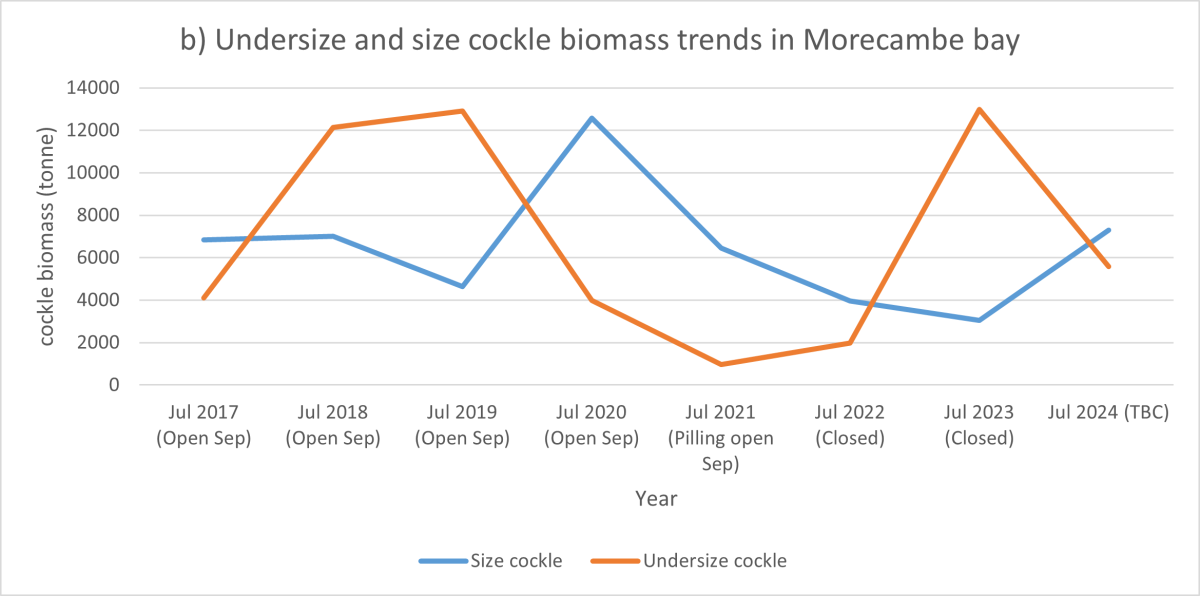
Overview of individual beds in Morecambe Bay 2024
The table below provides the biomass of size and undersize cockle for each bed from July 2024 surveys. Warton sands was unable to be surveyed due to inaccessibility.
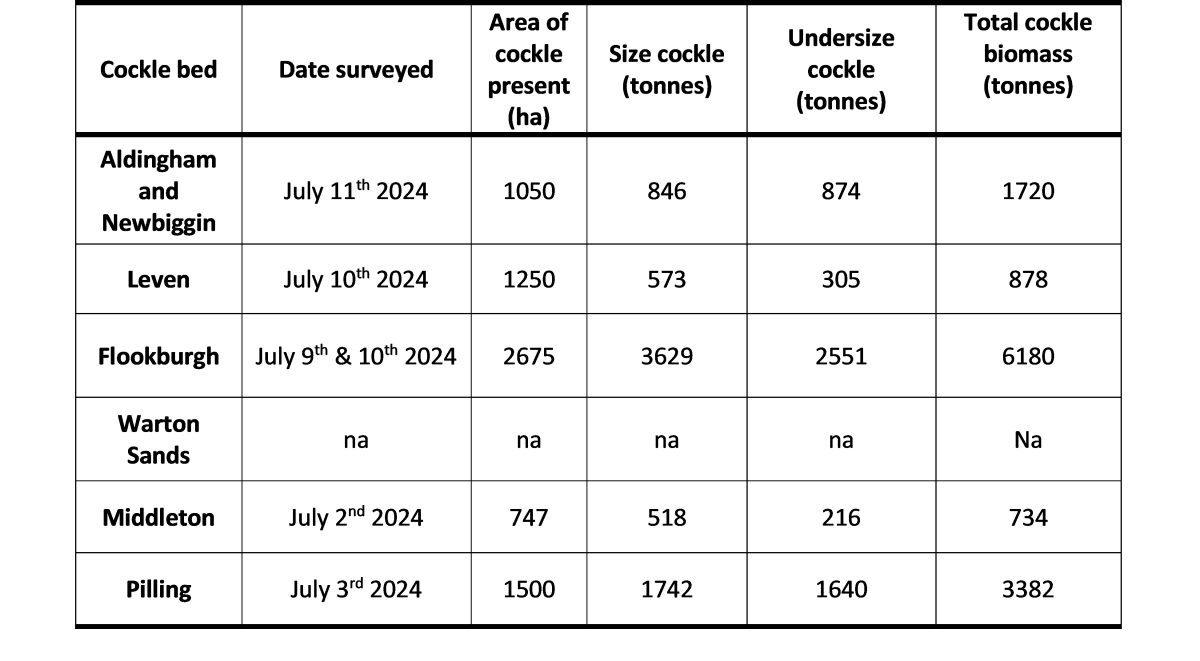
The following graph shows the biomass of size cockle for each bed, from 2017 to July 2024 for comparison. Bars framed in black indicate the bed was opened that year.
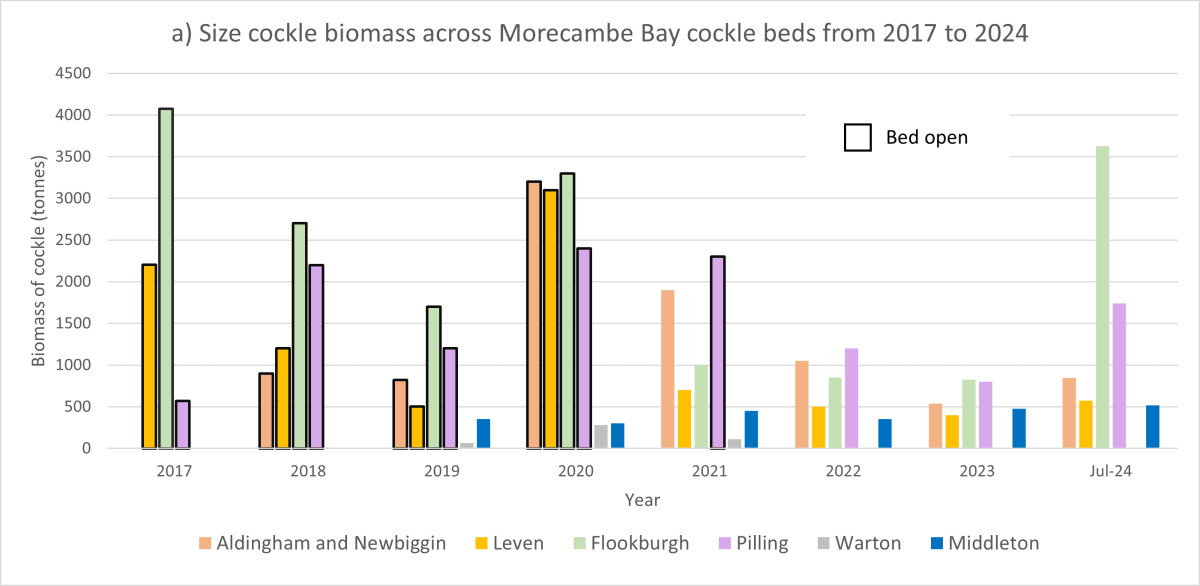
Flookburgh, Leven and Pilling are the three beds up for consideration following the July survey results. Further information specific to these beds is provided below. For further information on Aldingham and Newbiggin and Middleton, please see the full survey results here: https://www.nw-ifca.gov.uk/app/uploads/Agenda-Item-6-Survey-and-Inspection-Report-August-2024.pdf
Flookburgh / Leven July 2024 results
Density of size on Flookburgh: 16 per m²
Density of undersize: 24 per m²
*please note Leven is proposed for opening due to it’s proximity to Flookburgh, to have clear enforcement bounds and because much of the bed has such low stock it is considered there is a low likelihood of being fished.
The size composition of cockle is mixed across the bed, with many locations containing more than 50% undersize. The area is broadly split by a channel running from Grange-over-sands and out from Humphrey Head. The area is accessible by quadbike. There is a large amount of cockle approaching size.
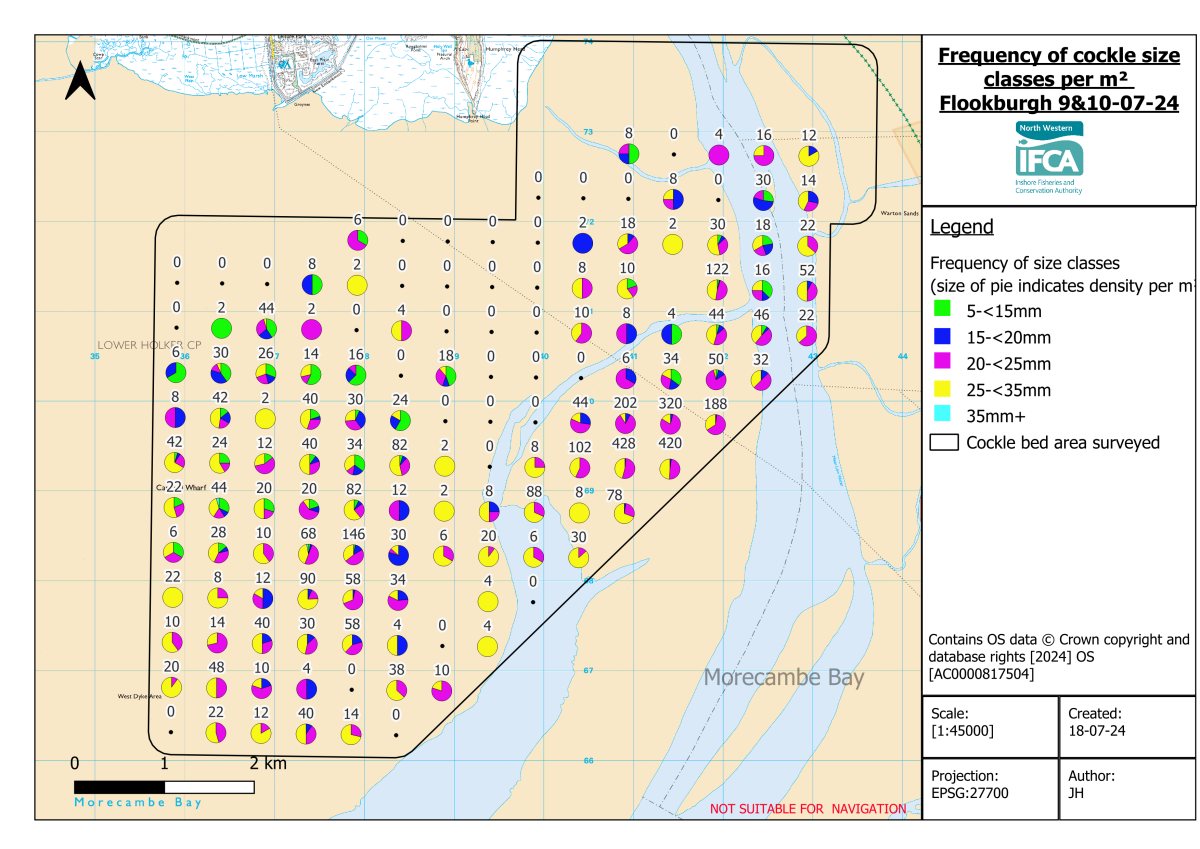
Figure 1. The composition of size classes of cockle per m² on Flookburgh. The numbers above the pie charts show the total number of cockle (both size and undersize) found at that sample location.
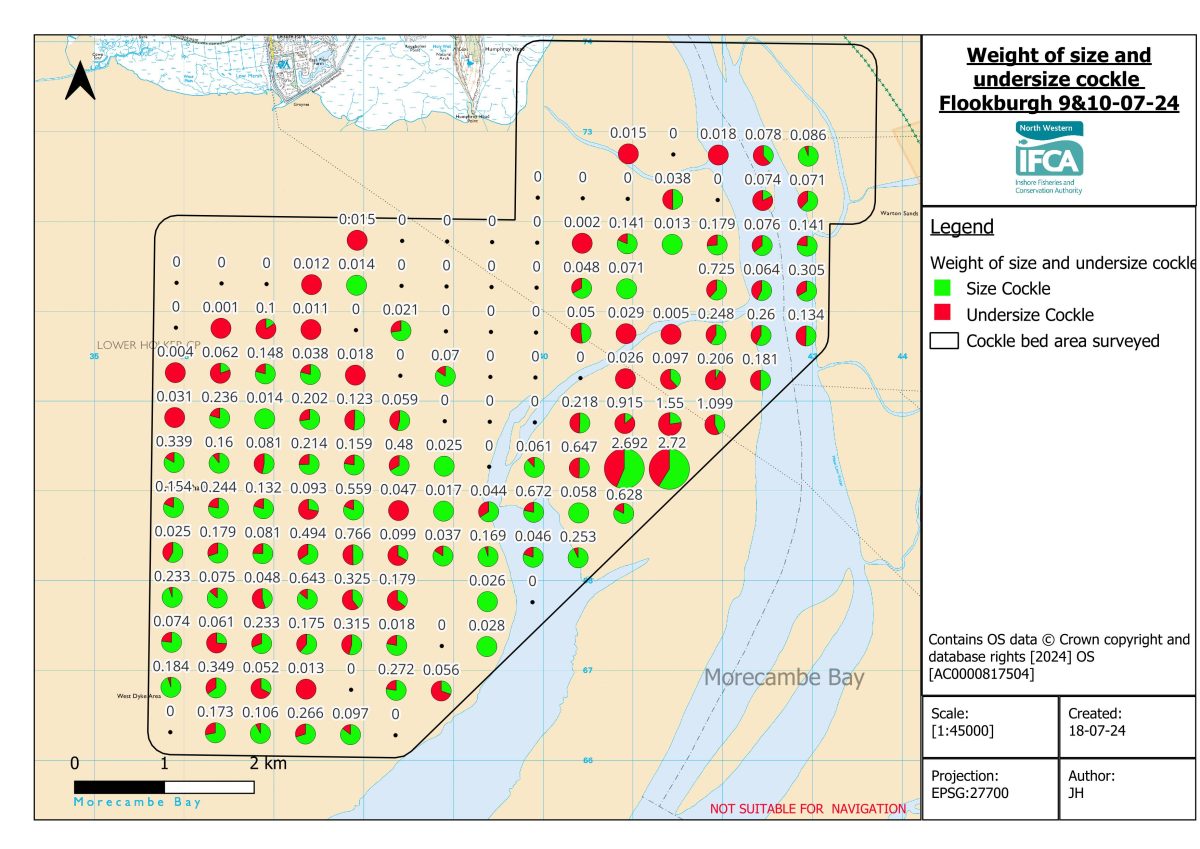
Figure 2. The proportion of size and undersize cockle per m² on Flookburgh. The numbers above the pie charts show the total weight of cockle (both size and undersize) found at that sample location.
Pilling July 2024 results
Density of size: 14 per m²
Density of undersize: 26 per m²
The majority of size cockle is located to the west of the bed, and is mixed with predominantly undersize. This undersize is predominantly in the 20-25mm category, though some is in the 15-20mm.
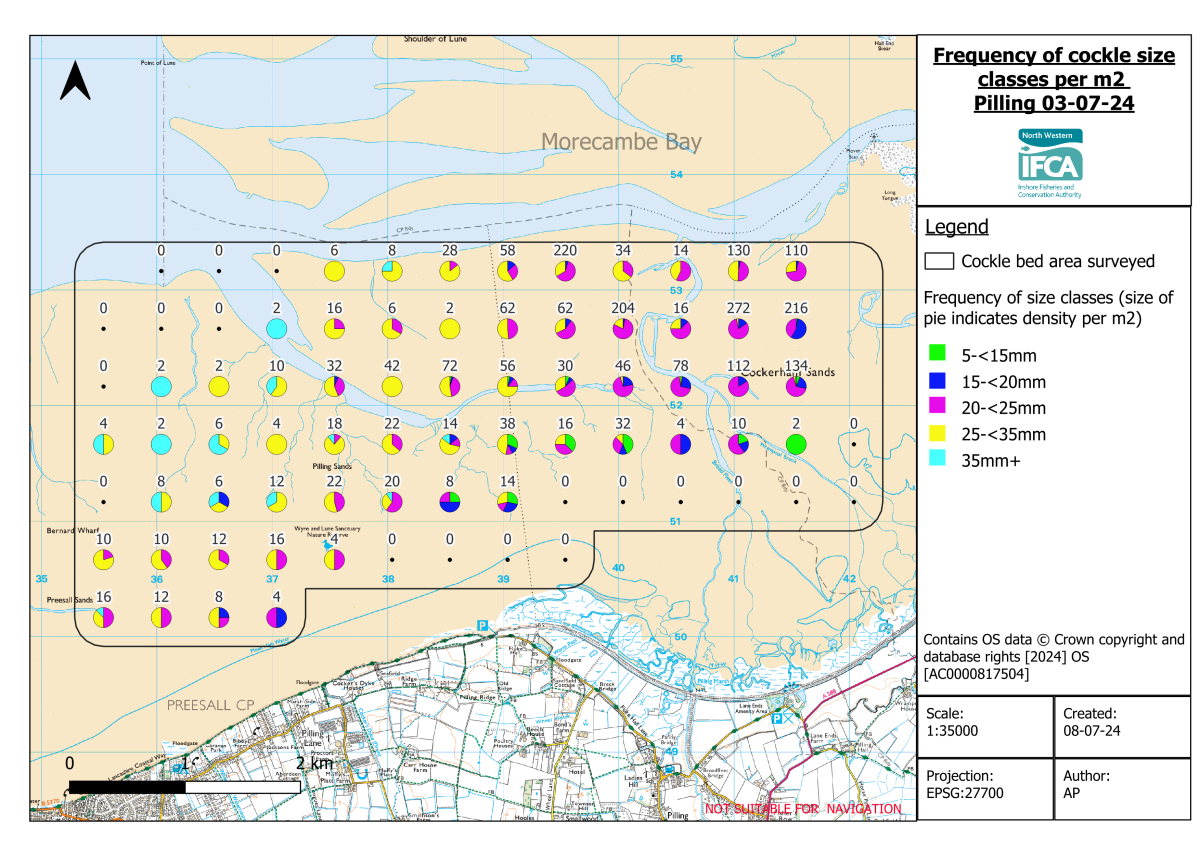
Figure 3. The composition of size classes of cockle per m² on Pilling. The numbers above the pie charts show the total number of cockle (both size and undersize) found at that sample location.
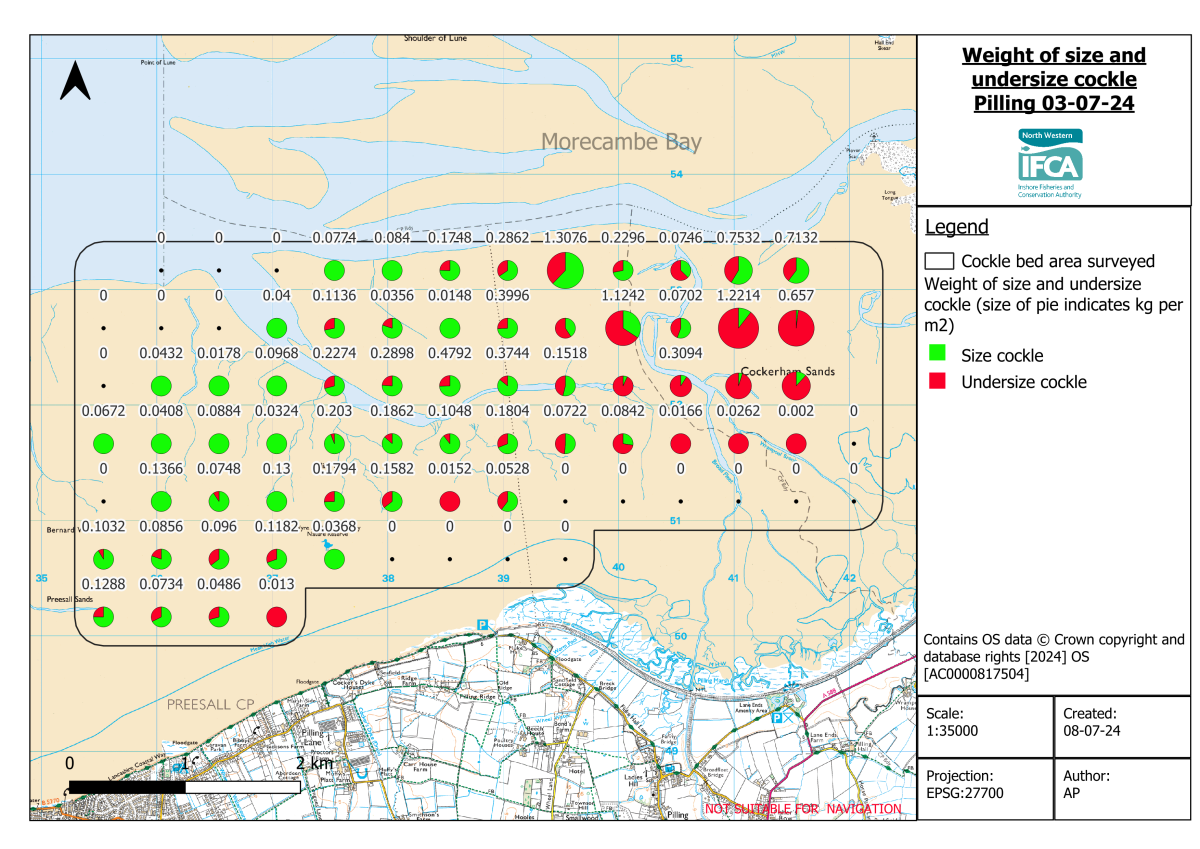
Figure 4. The proportion of size and undersize cockle per m² on Piling. The numbers above the pie charts show the total weight of cockle (both size and undersize) found at that sample location.
Leasowe overview
The total biomass of size cockle is estimated at 799 tonnes as of July 2024, with 751 tonnes of undersize.
The graph shows the total biomass of size cockle (blue) and undersize cockle (orange) from 2017 to 2024 for comparison.
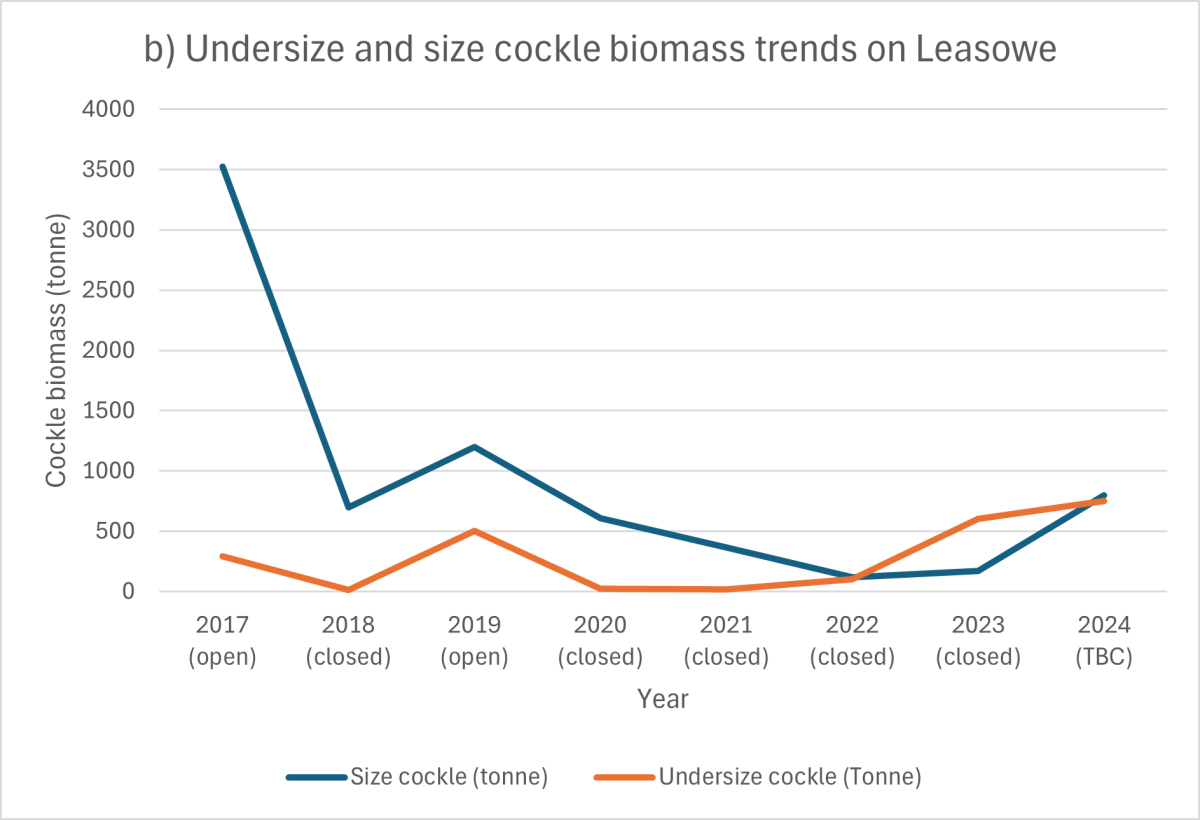
Leasowe July 2024 results
Density of size: 45 per m²
Density of undersize: 66 per m²
The main biomass of cockles are in the 20-25mm and 25-35mm size classes. The density of size and undersize cockle mixed around 50:50. Densities are high close to shoreline.
*please note Leasowe has had a historical reserve of ~800 tonnes for bird food requirements
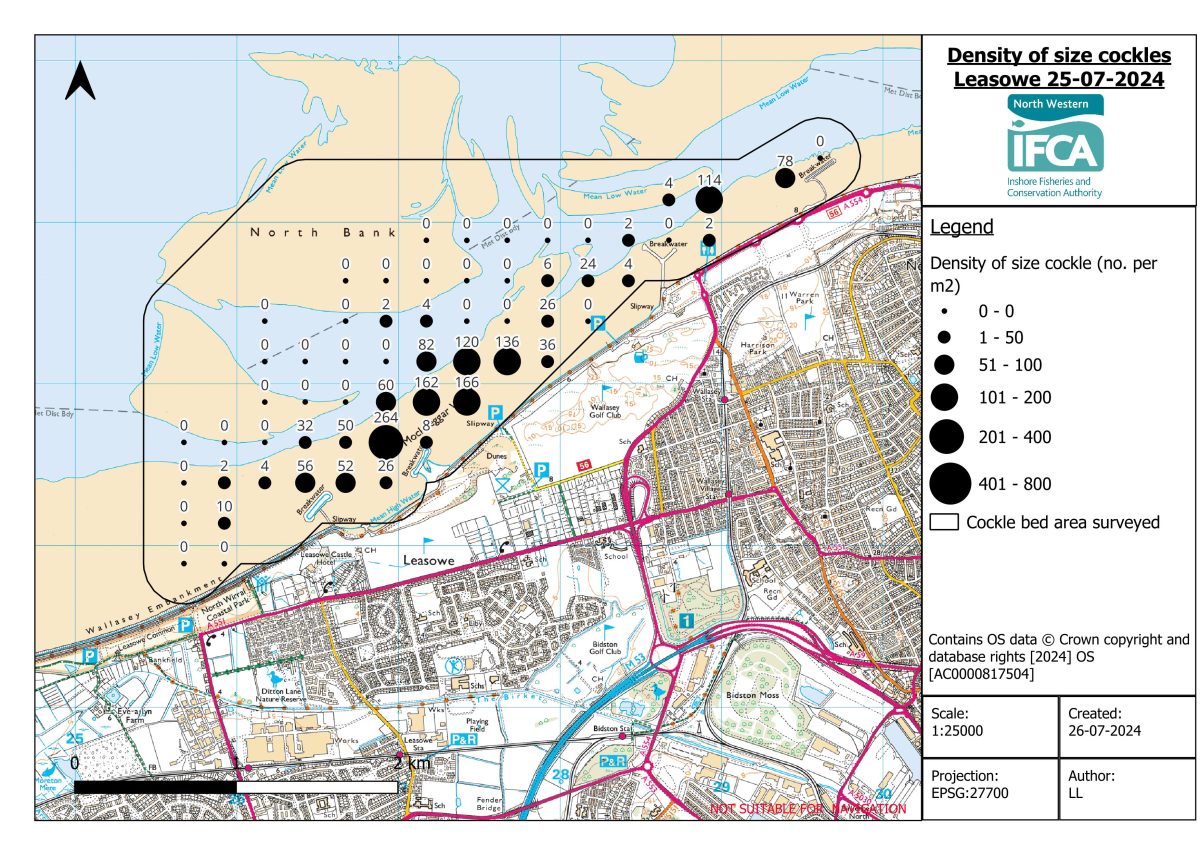
Figure 5. The density of size cockle on leasowe July 2024
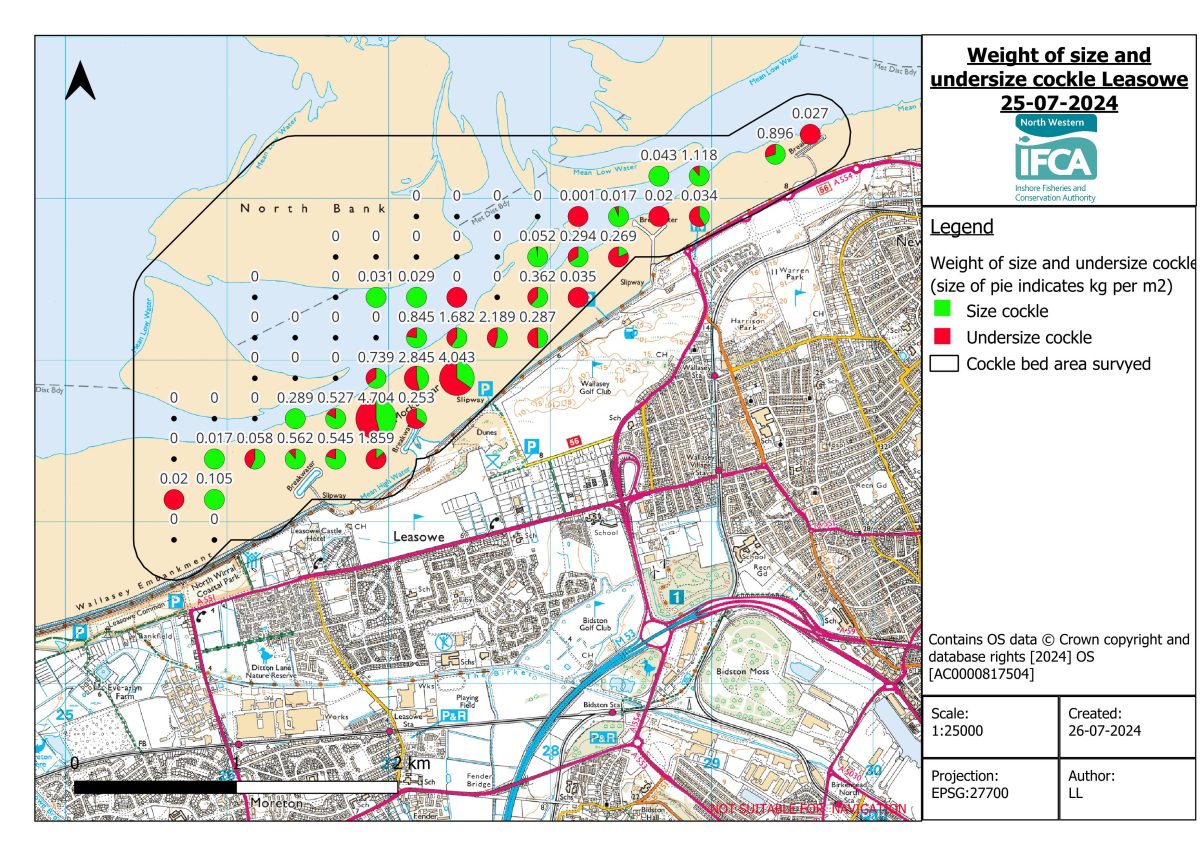
Figure 6. The proportion of size and undersize cockle per m² on Leasowe. The numbers above the pie charts show the total weight of cockle (both size and undersize) found at that sample location.